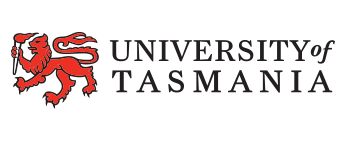Energy & Mining
What An Optimised And Well-Equipped Meeting Room Environment Offers Your Organisation
In a workplace environment, there is no space more important than the meeting room. This ...
LEARN MORE
The meeting space is the hub of any organisation. It provides a space where employees can collaborate, customers and clients can be met and important board meetings can take place. Yet, in this modern working age, meeting spaces are more integral than ever before.
In fact, now meeting spaces must be fitted out with video conferencing technology. Otherwise, the meeting room will no longer be a space to meet with fellow employees, customers or clients.
This is largely due to the fact that many workplace and everyday operations are taking place remotely. So, rather than a meeting space being a tool to facilitate face to face conversation, it is now expected to operate as a hub for another type of face to face conversation- virtual communication.
At the heart of this meeting room transformation is cameras. By being able to look into a camera and share everything from key company statistics to individual project information, nothing is lost in this new operating environment.
On the contrary, companies have everything to gain. Cameras transcend barriers, making hiring practices more broad and reducing the hours spent travelling to converse with potential clients. Ultimately, the right technology can minimise the need for employees to be physically present in the office.
Over the last decade, meeting rooms have evolved exponentially. In the past, meeting rooms have been used as spaces to spend hours developing policy, training employees, or working on a client’s campaign.
While hybrid working arrangements have fundamentally changed the way in which meeting rooms are used, incremental changes have been happening for years. This is largely due to the fact that attitudes towards productivity have shifted.
Rather than spend hours in a meeting room, employees are more inclined to pick and choose which meetings they attend in order to maximise the amount of time spent at their individual desks.
To further highlight this point, take the financial services industry as an example. When asked about business priorities, 84% of respondents were focused on ways in which to improve operational effectiveness.
Changes to the meeting room were also ushered in as a way to take advantage of advancing technology, webcams were utilised in order to meet with major stakeholders or potential clients. However, the expectation and reputation of virtual conferencing was always that these connections would be blurry, and unproductive.
In the modern day, such an uncertified connection is simply not up to standard. Especially when you consider that meeting rooms must now incorporate technology that can extend to employees, clients, and customers.
This is because of the hybrid work evolution. In any one company, workers may be situated in-office, remotely, or a combination of both. While the workforce might be geographically spread, the need for communication and collaboration remains the same.
This is because clients and customers expect the company they are receiving a service or goods from to remain true to their word. As such, companies need to find a way to foster spaces for communication and collaboration across a geographically sparse workforce.
The overarching solution to this is video conferencing tools. Products such as Rally Bar mean that while some employees may be working remotely, they can still seamlessly interact with fellow workers, important clients or customers who may have questions.
Customers are the priority. In fact, 91% of surveyed respondents ranked acquiring and retaining customers as their top priority.
With 39% of virtual meetings taking place in a conference room and 63% of workers more inclined to use video conferencing if huddle rooms were better equipped, the importance of embracing this meeting room evolution is highlighted. Otherwise, non-equipped companies will be left behind.
The evolution of meeting room spaces has been instigated by necessity. Companies need to communicate with remote employees. Companies also need to communicate with clients and customers. However, while born from necessity, such a transition has numerous operational benefits.
When outfitting a meeting room with an optimised, certified video conferencing solution, communication becomes seamless. This in turn enhances productivity for employees and also company perception amongst clients and customers.
While it can be tempting to install the same solution in each meeting space, it’s important that companies think flexibly. A huddle meeting space will not need the same tools as a large meeting space and vice versa.
There is an enormous amount of organisational value in ensuring that each meeting room or space is optimised, benefiting the bottom line and importantly, return on investment, as well as employees, IT staff and numerous external parties.
One of the great benefits of an evolved meeting space is the fact that it broadens business opportunities. Rather than missing an important meeting due to time differences or flight delays, an evolved meeting space means that you are always able to grasp opportunities with both hands.
Video conferencing solutions transcend all barriers, whether these barriers be time differences or physical differences. This means that your business can always put its best foot forward, whether the meeting is for communication or connection purposes.
As previously mentioned, video conferencing solutions transcend time. This means that a company can always be available should clients or customers require contact. On one level, this means that a business can offer improved customer services, it also allows a business to operate on a global scale.
A key negative associated with virtual meetings is technology that needs to be troubleshooted. As such, one element of the meeting is compromised, whether that be audio or visuals.
With video conferencing solutions, equipment is easy to deploy, use and manage. Ensuring that meeting attendees are provided with both an immersive and consistent experience. All of which helps to ensure that employees are being productive throughout the course of their day. Whether they are at their desks working or attending a meeting.
An evolved meeting room means that a company can broaden hiring practices. By equipping spaces with technology that facilitates collaboration and communication, the hiring of individuals is not limited by location barriers. Ensuring that your company can hire the most qualified and appropriate candidate for the role, even if they live in another city.
Being able to broaden the talent pool will have drastic effects on sectors such as government. Especially when you consider that a lack of available talent is one of the major inhibitors for government agencies due to factors such as capped salaries and an inability to compete on remuneration alone.
The ability to offer incentives that aren’t work related, such as working remotely, will help both attract and retain talent. Something that government agencies are currently struggling with.
Embracing the meeting room evolution can help companies acquire key data. This is because video conferencing solutions can aid communication, all while providing what is known as meeting room analytics.
These analytics are acquired with privacy in mind. Based on shapes in the rooms, this data can look at everything from who isn’t and is talking and who likes to interrupt to elements of diversity and importantly, how the meeting room is actually being used. As a result, the company is provided with data that looks at company real estate and employee productivity.
With 88% of surveyed respondents in the government sector stating that creating a data-driven organisation is a top priority, the ability to garner key insights will help aid this transition.
Finally, an evolved meeting room has the benefit of levelling the playing field. This is because in-person meetings have a clear hierarchy with senior staff sitting at the head of the table. With video meetings, everyone occupies the same amount of space on the screen. This very subtle change gives junior employees the confidence to speak up and collaborate.
Embracing the meeting room evolution means that companies will have to operate off platforms such as Microsoft Teams on Windows in order to host or join meetings with fellow staff, clients or customers.
One of the benefits of a platform like Microsoft Teams is the ability to receive multi-camera support. This essentially means that meeting participants can switch between different video camera feeds. A practice that has multiple benefits for those attending virtual meetings.
The notion of a second camera helps to ensure that meeting room attendees who are tuning in virtually have unfettered access to the meeting. This means that if the meeting host is using the whiteboard to illustrate key statistics, the virtual attendee can change the camera to strictly view the whiteboard. Access to all relevant information helps make attendees valuable.
It’s also worth noting that a second camera works to elevate the meeting room experience for in-person attendees too. This is because, with a second camera, there are no barriers to communication and collaboration. Every meeting attendee has access to the same audio and visuals, ensuring more successful collaboration and therefore, a more productive meeting.
Importantly, with a legacy mindset and processes ranked as one of the top 10 barriers to technology initiatives in government agencies, a second camera also helps businesses move away from this mindset.
When it comes to deploying video conferencing solutions, there is an inherent sense of ease. This is evident when utilising plug-and-play devices and when toggling through different features.
Accessing a second camera is as easy as:
The Logitech product suite enjoys an inherent level of flexibility. This means that everything from Logitech webcams and cameras to conferencecams such as MeetUp are deemed compatible.
For an organisation, this means that whether your medium meeting room or huddle space is equipped with video conferencing technology ranging from Rally Camera and Meetup to the Rally Mini and Brio webcam, utilising both common and advanced features will be seamless. Ensuring that every meeting your company holds is both efficient and effective.

James works with businesses in Victoria and Tasmania to create the perfect Logitech solution so they can communicate anytime, anywhere.
He believes video collaboration enables businesses to communicate effectively, increase productivity and maintain unified team culture.
With 11 years of industry experience, James is committed to partnering with clients to tailor their solutions. He delivers the right hardware within their budget to simplify their way of work and create sustainable change.
James Barker
Enterprise business development manager - VIC | TAS












There’s the perfect solution for every space. Get in touch with our team below for a free, no-obligation discussion and see how we can help today.